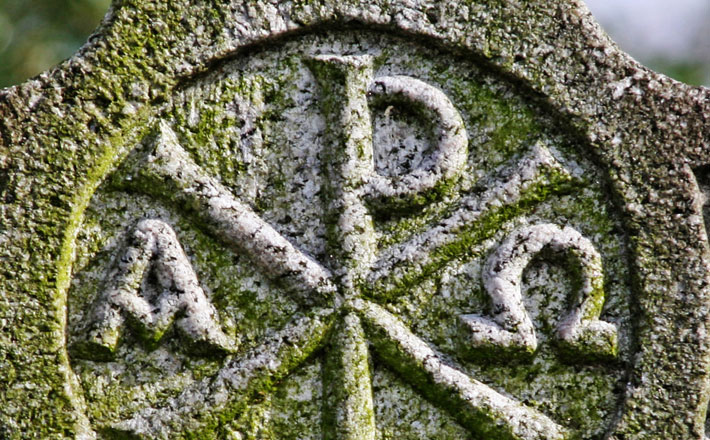Commentary on John 17:20-26
This Sunday wears many hats. For some it will be the observance of the Ascension of the Lord.
For those who mark the seventh Sunday of Easter, it is the in-between time, between the Ascension of the Lord and the coming of the Spirit at Pentecost. And we must also note that many will be celebrating another important observance, Mother’s Day.
The gospel reading appointed for the “in-between” time, the seventh Sunday of Easter, turns to the Gospel of John. This passage is the conclusion of Jesus’ final prayer before departing for the Garden of Gethsemane and the events of the Passion. One way, therefore, is to read this as a part of Holy Week during the retelling of the final supper that Jesus celebrated with his friends and followers.
But as we read this passage today those events are in the past; several weeks in fact. And since that meal they/we have walked the path to the cross; prayed as Jesus gave his life for us and stood with Mary outside of the empty tomb. We have celebrated the resurrection and now the Ascension. Jesus was victorious over the grave and now has been raised to sit at the right hand of God. But the disciples, and we, are trying to make sense of all of this. So in this new time, this in-between time as we await Pentecost, we return to Jesus’ prayer.
It is a prayer that looks to the future. Jesus was praying not only for the people seated around him at table that evening but also for his future followers, which thanks be to God, includes us. And it is a prayer that focuses on unity, on all being one.
I suspect that as the disciples gathered for what would be their final meal with Jesus (although they did not know it at the time) they did not feel like one. They were no doubt frightened, uncertain, insecure, scrappy, and squabbling. Peter was petulant, Judas plotting, and James and John were probably still jockeying for promotions. Did it change after the Ascension? Probably not. Having been a part of the church for many years I would add that this describes many the churches I have been a part of — far from being described as one.
A challenge of writing these preaching resources is that they are prepared many months in advance. For a teacher/preacher who relies heavily on current events as examples and illustrations this proves quite a challenge because I want to point to things that are happening now knowing that when you open this to begin to prepare for your sermon what I describe will be ancient history.
However, I am going to point to two examples trusting that (unfortunately) things will not have changed. The Congress just passed legislation to prevent us from falling too far off the fiscal cliff. But underlying all of that was disunity, discord, and dissension. Republicans could not agree with the President, with Democrats. Republicans could not even agree with Republicans. They are far from being one.
Likewise, I can point to many of our denominational bodies for examples and signs of that same disunity, discord, and dissension. In the Episcopal Church, of which I am a member, the Presiding Bishop and the Diocese of South Carolina are now at an impasse. It is along the lines of, “You can’t fire me — I quit.” The national church no longer considers them to be the true diocese, while the local Bishop disagrees. He wants those in union with the national church to choose a different name. They are far from being one.
As it was for the disciples then, so too is it crucial for us today to return to Jesus’ prayer, for it describes his hope, his vision, and his picture of what we, his followers, are to look like and how we are to live our lives together. It is very clear that his words are meant for everyone — then and now – as he prays for “those who will believe in me” (17:20) through the words of the disciples.
It is a prayer for community. Jesus prays that, “all may be one.” To be a follower of Jesus is to be a part of a greater whole. According to Jesus there are to be no solitary Christians or spiritual “Lone Rangers.”
Within that community the prayer is for unity: “that all may be one.” Does that mean we all have to get along all the time? Does that mean we all have to agree all the time? If one thinks of this as a functional/political statement, it would seem to call for constant agreement and accord. But if one thinks more in ontological terms then it becomes who we are. We are one in Christ whether we agree with each other or not. We are one in Christ whether we like one another or not. To become a part of Christ is to become a part of the community; a part of the one.
Jesus’ prayer reminds us that our unity, our “oneness” is to be a sign to the world of God’s love for us in Jesus Christ. Oneness and unity is about love. And if you have been a part of a family, a member of a church, or a community, you know that within that love there can be disagreements and squabbling. We are human. But the mystery of the incarnation is that God desired unity with us so much God became one of us. And in that moment we were drawn into the oneness of God, the Creator/Father/Mother, the Son, and the Spirit. It is with God’s help that we can live into that oneness.
The disciples were in the time between the Ascension and the gift of the Spirit at Pentecost. We are in the time between the first and second coming of Jesus Christ. May we rejoice in the assurance that Christ is with us, continuing to pray for our oneness, our unity.


May 12, 2013